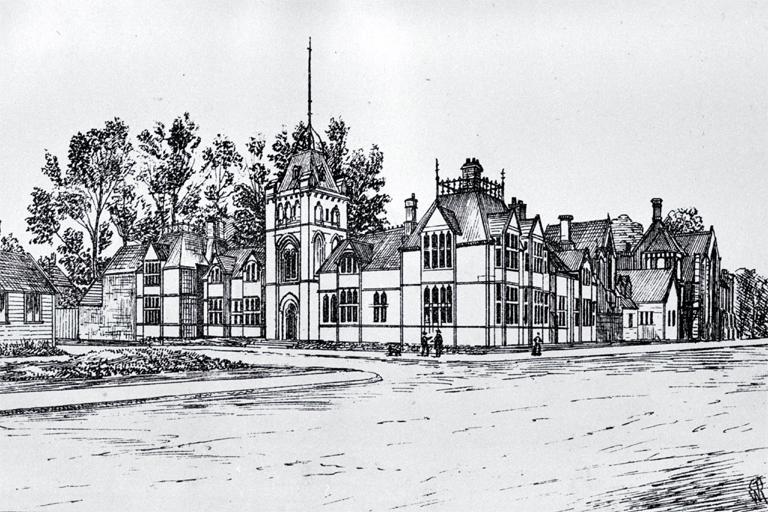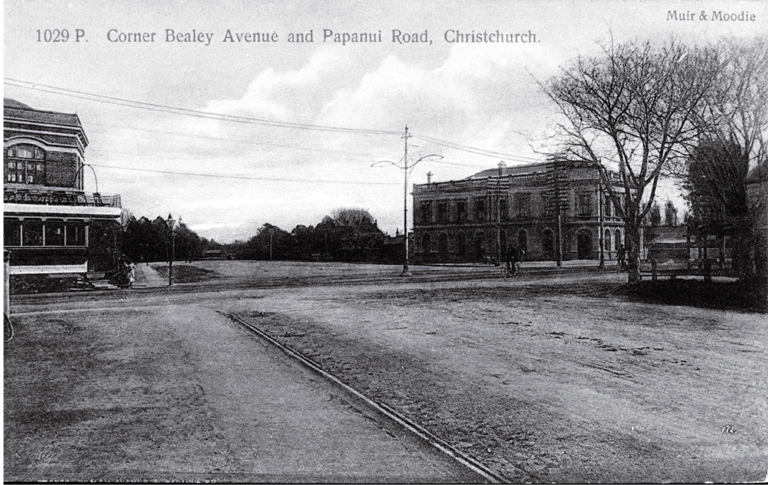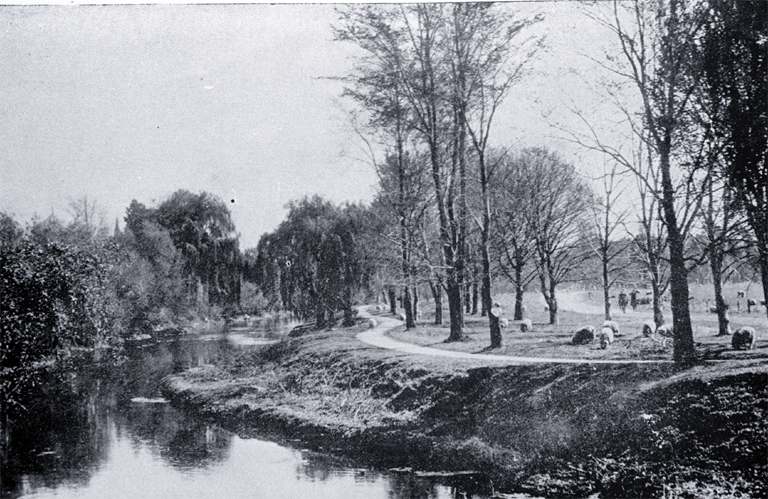If you were out taking an evening stroll along the streets of north central Christchurch in March 1894 then there is a good chance that you may have seen a ghost.
For that is what a young man named Cunningham initially thought that he had encountered on the night of March 9.
At 11pm Constable Isherwood was performing his evening rounds north of Cathedral Square. Being a Friday, the policeman was no doubt anticipating a night of drunken brawls and other misdemeanours. Yet when he was approached by a panic stricken Cunningham he could not have imagined that the young man would tell him such a bizarre tale.
Shortly before, Cunningham had learned from some children that something frightening was lurking in the grounds of St Matthew’s Church. As he approached the church, a figure clothed in white had suddenly leapt over the fence. At first the figure had proceeded to leap up the street towards a group of people. Then, to Cunningham’s dismay, it turned and bore down on him. His courage failing him, Cunningham did not stay to confront the figure but instead ran in the direction of Cathedral Square.
After telling Isherwood, he was directed by the policeman to give a statement at the nearest station. At first the police may have been sceptical of his claims. Only a week earlier there had been reports of women and children in Opawa being frightened by what they had believed was a ghost but which the local police insisted was simply a case of a girl in a white apron being misidentified. Yet as the police were soon to learn, Cunningham was not the only person to have encountered the strange figure that evening.

An hour later, a number of distressed children residing in Victoria Street had told their mothers that they had seen a ghost. Although these reports were initially dismissed, their mothers were surprised to later learn that there had been some truth to their children’s stories.
The police step in as attacks increase
The matter soon caught the attention of Inspector Thomas Broham. Recognising that someone was purposefully making an effort to disturb the peace, he ordered his men to apprehend the individual.
The next recorded sighting occurred on March 12. At 8pm two girls, Lizzie Smith and Bella Leith, were sent to deliver a message. As they passed a side street on Papanui Road the figure, now known as “the ghost”, jumped out at them.
On the following evening, at 11pm, Alfred James DeMaus, a machinist who lived on Montreal Street, was walking with several women near the vicinity of today’s Knox Church. DeMaus was already aware of the supposed ghost and after one of the ladies caught sight of a white cloth beneath a nearby tree, he went over to investigate. There he found two young men hiding. DeMaus reprimanded them for their behaviour and in response one of them struck him on the head, knocking him to the ground. His attackers quickly ran off when the women came to his aid.

This time the victim was Albert Bellamin, a compositor who lived on Armagh Street. That night, as he walked home, his route took him past a paddock on the corner of Armagh and Madras streets. Nearing the paddock, he saw a figure dressed in white tights and wearing a mask illuminated by phosphorous (a chemical which glows when exposed to oxygen) which, was behaving erratically. Unsettled by the sight, Bellamin crossed the street. The figure, however, leapt out at him and proceed to dance around him in an attempt to prevent him from going on his way. Bellamin tried to force the figure aside but as he did so it grabbed him by the arm and kicked him into a gorse fence. By the time Bellamin had pulled himself out of the hedge the strange figure had vanished.
Hysteria grips the city
The threatening behaviour of the ghost worried Inspector Broham. People were afraid to go out for evening walks. Reports of the attacks were printed in The Press, and with each repetition the stories became ever more fanciful. The ghost was credited with the ability to make unnatural leaps and was said to have been seen in various locations at once. Some of these sightings, which ranged from Opawa to Addington, could no doubt be attributed to nervous people assuming that any figure they saw at night who happened to be wearing an item of white clothing was the ghost.
Another location for sightings of the ghost was Hagley Park. There its victims were often nursemaids and unattended ladies. A pair of lovers, who had met in the park, were also subjected to a terrifying experience. While they had been sitting on a bench the ghost had crept up behind them and thrust its face, with its fiery eyes, between theirs.

By the beginning of April the hunt was for the ghost was still continuing, as Inspector Broham had issued orders for his officers to collect legitimate claims of sightings in order to differentiate them from the embellished tales.
Ghostbusted
After a month of suspense the reports of the ghost suddenly disappeared from the newspapers. People assumed that the police had made an arrest but were puzzled as to why it had not been announced. Then, in a column of the Observer on 28 April 1894, it was revealed the reason for the sudden silence. As well as being the son of a well-known local doctor, the culprit was also a mental patient who had escaped from his carers. The fiery eyes which had given him a supernatural appearance were attributed to the use of rings made out of phosphorous material.

Further reading
- Read an 1894 article from the Press about the ghost.
- Read about crime in early Christchurch in the Canterbury Police Gazette
- Books about 19th century crimes and mysteries in Christchurch





Add a comment to: The Victoria Street Ghost